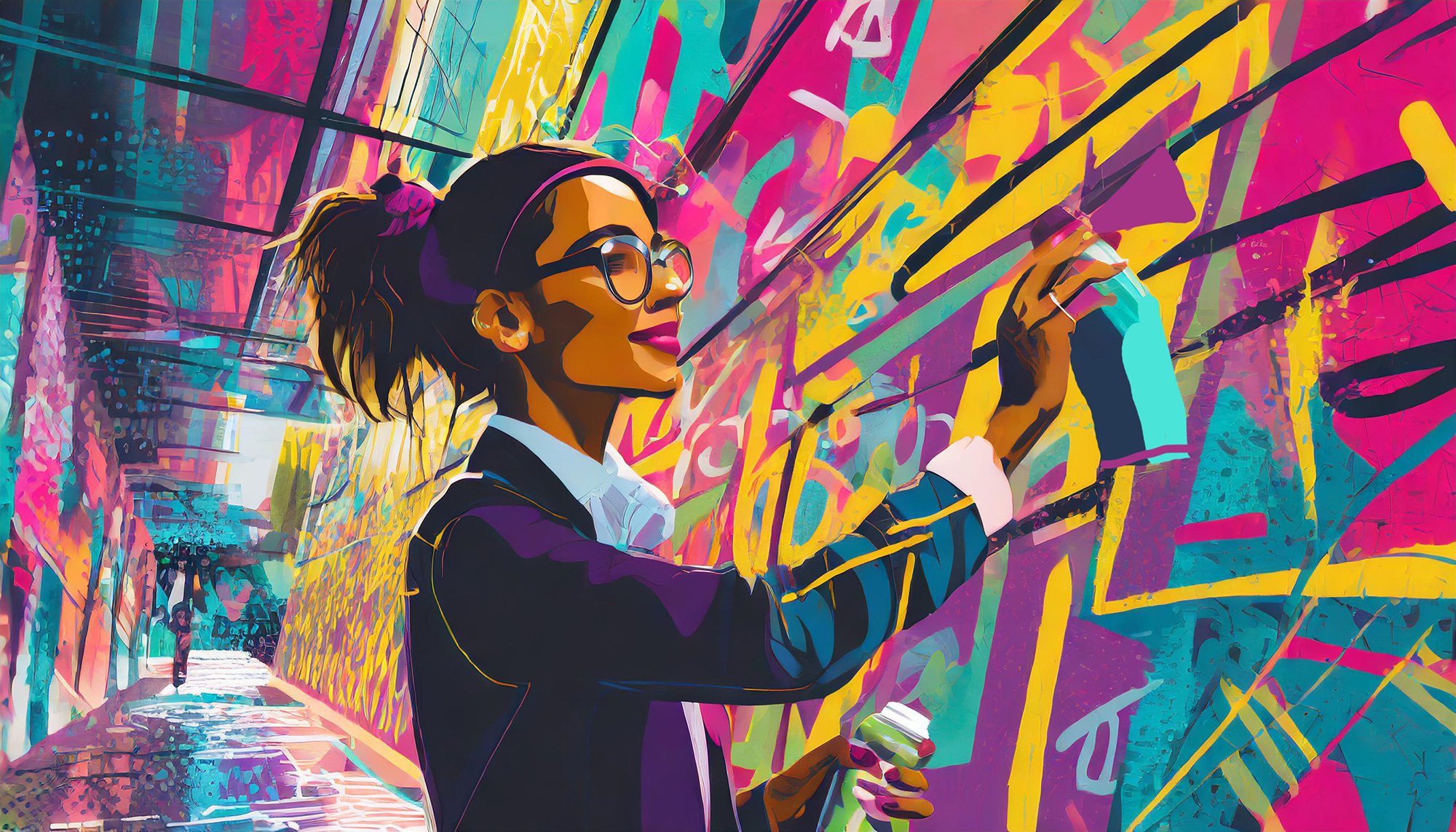From Data to Distinctiveness: How AI Can Help Brands Stand Out in an Oversaturated Market
Introduction: The Double-Edged Sword of AI in Branding
AI has transformed marketing, offering unprecedented levels of personalization, efficiency, and data-driven decision-making.
But there’s a catch—when everyone is using AI the same way, brands start to look and sound alike.
Personalized email campaigns, AI-generated content, automated social media captions—these tools increase efficiency but don’t automatically create brand distinctiveness.
Instead, brands risk blending into an oversaturated market, where every brand claims to be "data-driven" but lacks real differentiation.
So, how do brands cut through the noise? The answer isn’t to abandon AI—but to combine it with human creativity to craft something truly unique.
The Problem: AI-Driven Personalization Isn’t Enough
Personalization used to be a competitive advantage.
Now, it’s the bare minimum.
AI-driven marketing engines can recommend products, generate copy, and even craft visuals, but without a brand’s unique strategic vision, these outputs start to feel repetitive.
AI follows patterns, but distinctiveness comes from breaking them. Most AI-generated recommendations rely on trends and past data, which means brands using AI alone often follow the same formulas as their competitors.
Personalization ≠ Differentiation. Just because content is personalized doesn’t mean it’s original or memorable. If every brand is personalizing in the same way, consumers won’t remember one over the other.
Creative sameness is a real risk. When everyone relies on AI tools to generate content, messaging, and visuals, the results start to feel similar, leading to a sea of sameness.
AI is incredibly powerful, but without a brand’s strategic direction, it risks making marketing efficient - but uninspired.
The Solution: Merging AI Insights with Human Creativity
The real magic happens when AI is used not just for automation, but as a tool for strategic enhancement. Here’s how brands can leverage AI to enhance distinctiveness rather than dilute it:
1. AI as a Thought Partner, Not a Replacement
Instead of relying on AI to generate final content, use it as a strategic brainstorming partner. AI can:
Surface hidden insights in customer data to refine brand messaging.
Generate alternative angles and unexpected ideas that human teams can refine.
Help marketers challenge their own assumptions by analyzing patterns and pointing out contradictions.
Pro Tip: Use AI to generate multiple creative directions, then have a human team filter, refine, and add originality.
2. AI for Consumer Understanding, Humans for Emotional Connection
AI can analyze vast amounts of consumer data to uncover preferences, behaviors, and market gaps. However, humans bring the emotional intelligence needed to connect with audiences on a deeper level.
For example:
AI can identify trending topics in your industry, but human intuition determines which trends align with your brand’s core values.
AI can segment audiences based on behavior, but humans decide how to craft messaging that actually resonates.
AI can suggest high-performing ad copy based on data, but humans bring the creative nuance that makes it stand out.
Pro Tip: Use AI for data-driven insights, but let human creativity craft the brand story.
3. AI for Speed & Efficiency, Humans for Originality & Artistry
Brands should let AI handle repetitive, data-heavy tasks while focusing human effort on innovation and storytelling.
AI can A/B test thousands of ad variations, but humans need to define what a compelling brand voice looks like.
AI can generate product descriptions, but human copywriters can add humor, emotion, or cultural relevance that AI might miss.
AI can assist in design, but human designers create original compositions that break from trends.
Pro Tip: Use AI to enhance speed and iteration, but let humans define the artistic vision.
Real-World Example: Brands That Get It Right
Nike: AI-Optimized, Human-Driven Storytelling
Nike leverages AI for data analysis, predicting trends, and optimizing campaigns. But when it comes to storytelling and branding, the human element reigns. Their campaigns tap into emotions—like motivation, ambition, and perseverance—which AI alone could never replicate.
Spotify: Personalized, Yet Distinct
Spotify uses AI to analyze user behavior and create hyper-personalized playlists (e.g., “Discover Weekly”). However, it’s their human-led curation and witty, personality-driven marketing that make Spotify’s branding stand out from every other streaming service.
Liquid Death: Breaking Every AI-Driven Branding Rule
If AI were to suggest how to market canned water, it would likely push for clean, sustainable messaging with serene nature imagery. Liquid Death did the exact opposite—leaning into punk-rock, rebellious branding, and dark humor. The result? A water brand that stands out in a wildly saturated industry.
Lesson:
AI suggests what’s “safe.” Human creativity decides what’s bold and memorable.
Final Thoughts: AI is a Tool, Not the Answer
The brands that win in an AI-driven world won’t be the ones that automate the most—they’ll be the ones that blend AI with human creativity in a way that creates real differentiation.
Takeaways for Brands Looking to Stand Out:
Use AI as a strategic partner, not a replacement for creative thinking.
Leverage AI for efficiency, but let human creativity drive originality.
AI can analyze customer behavior, but human intuition builds emotional connections.
Brands that find the balance between AI efficiency and human creativity will be the ones that don’t just survive - but lead.
Want to Future-Proof Your Brand?
At The ZAM Studio, we help brands merge AI-driven insights with human creativity to build distinct, scalable, and culturally relevant brand identities.
Let’s build something unique together.Get in touch to elevate your brand today.

